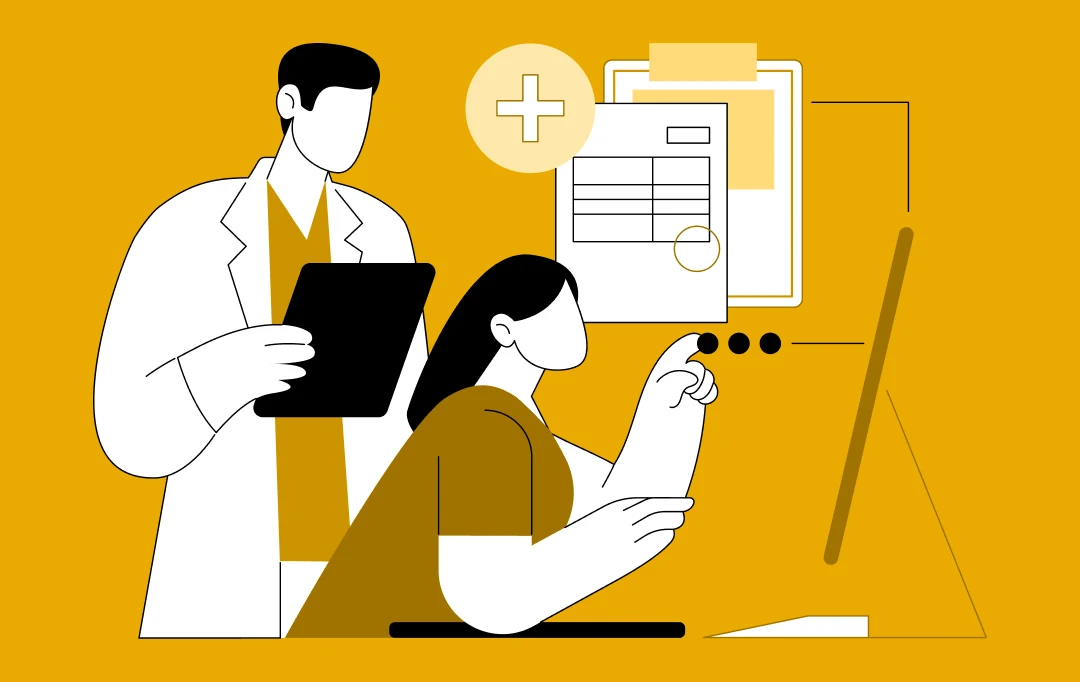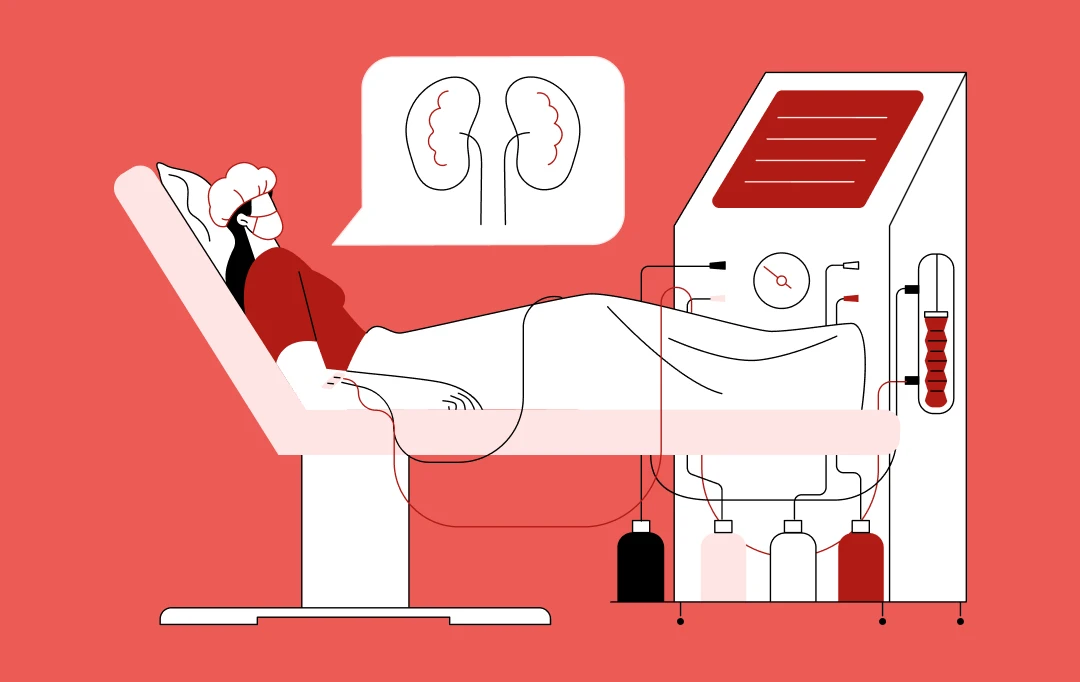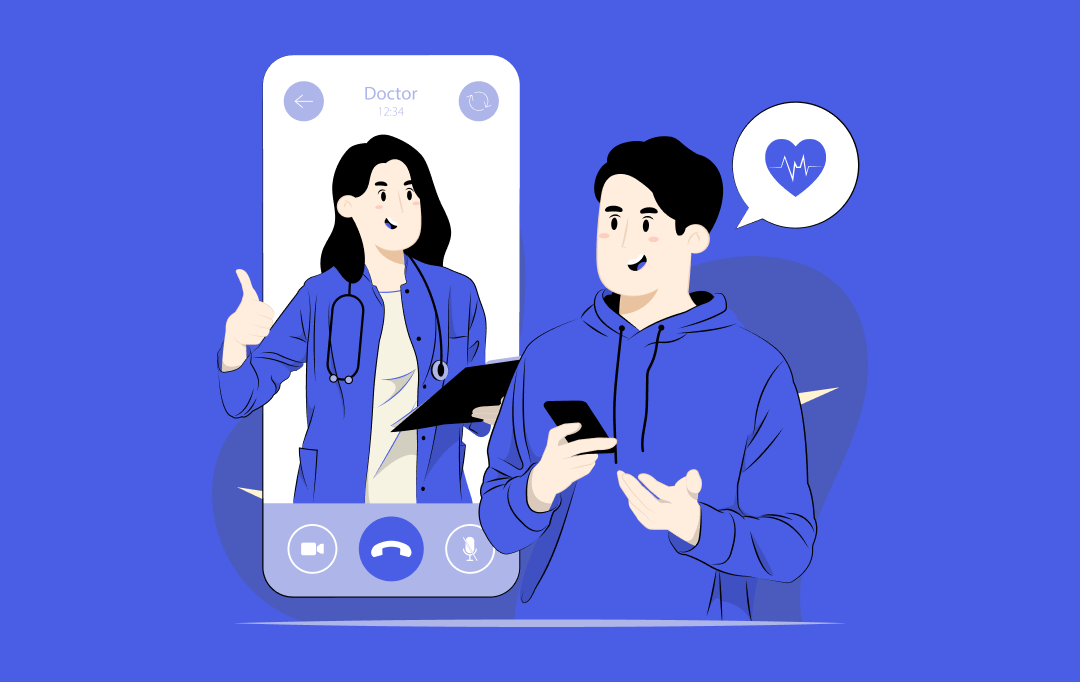- Types of Fitness and Nutrition Apps
- Apps for Tracking Physical Activity
- Apps for Diet And Nutrition
- Apps for Personal Training
- Hybrid Applications
- Features Required to Create Workout Apps Like MyFitnessPal
- Simple Onboarding
- Push Notifications
- Setting Objectives
- Monitoring Progress
- Dashboard with Expression
- Steps to Create a Fitness and Nutrition App Like MyFitnessPal
- Conduct Market and Competitor Research
- Create the UI/UX of your Fitness App
- Think about Basic Fitness App Features
- Choose the Ideal Health and Fitness App Development Team
- Select a Monetization Model
- Phase of Inception
- Technical Documentation
- Workout App Development
- Quality Control
- Factors Affecting the Cost to Develop an App Like MyFitnessPal
- Core Features
- Choice of Platform
- Design Complexity
- Location of Development Team
- Development Team Size
- Utilize Tech Advantage of Appinventiv to Create a Robust Fitness App
- FAQs
- Q. How much does the MyFitnessPal app cost?
- Q. How long does it take to build a fitness app like MyFitnessPal?
- Q. How do fitness apps make money?
Today, an increasing number of people are increasingly worried about their bodies and are ready to take action to improve them. And technology is inextricably linked to how quickly it has advanced. The current market snapshot indicates that the fitness space has significant potential as it continues to expand and grow. The graph below depicts the potential growth.
The transnational fitness app market was worth $4.4 billion in 2020 and is expected to expand at a healthy 21.6% CAGR from 2021 to 2028. Approximately 19% of smartphone users have at least one health tracking app installed. It could be about diet, exercise, nutrition, or something else.

Because of the pandemic, fitness and nutrition app development are in high demand. People refrain from going to gyms or yoga studios. They wish to become healthy at home with professional guidance and fitness tracking apps to help them do so. And there are numerous fitness and nutrition apps that are rapidly entering the market.
Must Read: 10 Groundbreaking Applications of AI in Nutrition
For you to become part of the fitness app industry, you should be well-versed in benchmark apps such as MyFitnessPal and have a list of their features on hand.
If you are considering building a fitness app, this article will provide you with all of the necessary information. Let’s look at how to build a fitness and nutrition app in detail. But before moving to that, let’s dive into the types of such apps.
Types of Fitness and Nutrition Apps
To create a fitness app, you must first decide on its type. Fitness apps offer a variety of features to their users, including result tracking, socializing, encouragement to keep going, and even education on the subject. It’s like possessing your own pocket-sized personal coach.

Fitness apps are classified into four types based on their performance characteristics.
Let’s take a look at each of them individually.
Apps for Tracking Physical Activity
This category of apps can monitor a user’s daily physical activity – pretty much everything that you do throughout the day. Activity tracking apps monitor the daily steps, hours slept, stairs climbed, speed and distance traveled, and total calories burned by the user.
The app displays users’ data on the app screen, and it is typically capable of creating charts, saving pathways on the map, and displaying the user’s progress.
[Also Read: How Much Does It Cost To Build A Custom Workout And Training App]
Apps for Diet And Nutrition
Diet and nutrition apps assist users in tracking their eating habits, counting the number of calories consumed/burned, controlling fluid balance, body weight/mass, and so on. Users can adjust personal goals, create shopping lists, and now even fetch recipes with a wide variety of diet apps.
They could also have some user-engaging elements or gamification elements, such as scoreboards or slimming competitions. Because they track your nutrition habits, nutrition and diet apps can even be considered activity tracking apps. The distinction is that they include more specialized functionality.
Apps for Personal Training
AI-based fitness apps like Fitbod can make you feel like you’re at the gym. A personal trainer is assigned to the user. It could be a human or an artificial intelligence-based assistant who assists the user through their journey to fitness.
This instructor in the fitness tracking app, like a normal trainer, tells users what exercise regime exercises to do, what to eat, and some other activities they should engage in to live a healthy lifestyle.
Following a health assessment, food and exercise recommendations are provided. It is carried out after the user has supplied the necessary information.
[Also Read: Personal Trainer App Development: Important Features to Implement]
Hybrid Applications
As the name implies, it combines all of the apps mentioned above. In these apps, you get a personal trainer who recommends what foods to eat and what workout exercises to do to achieve your specific health goal.
Additionally, these apps empower you to self-monitor yourself by performing calorie calculations based on what you eat and even the amount of calories you burn through exercise. As a result, the fitness application development for such an app incorporates all of the features and functions of all other apps.
[Also Read: How much does it cost to build a fitness app like Hevy?]
Features Required to Create Workout Apps Like MyFitnessPal

Now that we’ve learned about the various types of fitness apps, I hope it has helped you decide which category to pursue fitness app development. But have you ever thought about what features you should include in a fitness and nutrition app? Here are some key functionality features to consider.
Simple Onboarding
When a user logs in or registers for the app, the procedure should be straightforward. Signing up or logging in should be as simple as integrating social media or entering a mobile phone number or email address.
After signing up, logging in to the application on the same phone should be as simple as a single tap. Personal trainer onboarding should be simple (if you create a fitness app that involves personal trainers).
Push Notifications
Push notifications notify your customers about their own ongoing app actions, together with their routine commitments and goals. It’s also a great method for recommending new services, discount codes, and exciting offers the platform wants to promote.
Setting Objectives
Everyone downloads a fitness and nutrition app with the goal of becoming fit and healthy. Many people come with the intention of losing weight, treating a health disease, or maintaining their overall health.
Enabling a feature that allows users to set their own goals based on their needs improves the user experience. They believe the app fully understands them and provides personalized health solutions based on their details.
Monitoring Progress
As previously stated, setting goals is an important feature. It enables users to find out what they need to accomplish. Similar manner, the feature of progress tracking is essential.
Every day, the progress tracking tool shows exactly how much the user has performed to reach the goal. This serves as motivation for the user as they can see and learn what else they need to do to achieve the desired result.
Wearable devices or manual feeding could be used to track progress. Users of calorie counter apps must feed themselves in order to track their progress in terms of estimated calorie consumption.
Dashboard with Expression
Dashboards are the user’s windows through which they can discover what to do, exactly how to do it, and afterward track their progress. The user dashboard, personal trainer dashboard, and admin panel should all be explained by the app’s simple navigation and user-friendly user interface.
The dashboard should be simple to understand so that the user can set their profile and see their current progress toward the set target while browsing the app.
Steps to Create a Fitness and Nutrition App Like MyFitnessPal

Now that we’ve discussed the features, it’s time to get creative! Let’s talk about what steps need to be taken to create a fitness app.
Conduct Market and Competitor Research
Given the sheer number of mobile fitness apps on the market, you must find something unique to differentiate your offering. Examine the product offerings, platforms, design quirks, and customer reviews of your competitors.
Both positive and negative customer reviews can be found on Google Play and App Store. This can help you identify your competitors’ strengths and weaknesses, as well as ways to distinguish yourself from them.
Create the UI/UX of your Fitness App
The app design is the soul and essence of your app because it attracts people in and motivates them to use it. To create an excellent app design, the UX/UI designer scrutinizes your application requirements and develops a general layout, wireframe, and prototype of your fitness app.
A qualified and experienced team by your side can make you stand out in the competition Having an in-house team is, although a good idea, however, does require time and is a costly investment. You can leverage the tech expertise by outsourcing the project to companies like Appinventiv, as we have a strong and innovative development team that can comprehend your idea and convert it into reality.
Think about Basic Fitness App Features
While each fitness app has its own set of features, some basic features are shared by all apps. Take into account the following fitness app ideas when developing your own:
- Profiles of users: Nutrition apps are designed to assist users in achieving personal goals such as losing weight, healthy eating, or even gaining weight. As a result, a profile with personal data is required where users can enter and keep updating physical attributes such as body weight, height, and age.
- Notifications: In-app notifications constantly remind users about their workout sessions and motivate them. Notifications can be configured in conjunction with a fitness and nutrition plan or personal goals to alert users to an upcoming exercise.
- Monitor your physical activity: Connecting your fitness and nutrition app to a smartphone’s sensor nodes to enforce the tracking action is made simple by using APIs to obtain the fitness and health data captured on their platforms from Apple’s HealthKit and Google Fit.
- Sharing on social media: Make it possible for your users to connect and share their scores(results), and they will gladly tell everyone about your app.
Choose the Ideal Health and Fitness App Development Team
Aside from features and competitor analysis, you should concentrate on this point. It is critical to work with the topmost fitness app development company.
Find a company that has the experience, expertise, and vision to develop a fantastic app that sets itself apart from the rest.
With a dedicated team from Appinventiv, you can start with your project from scratch, with an unclear requirement and scope of work that will be transformed to make your vision into reality.
Also Read: The Ultimate Business Guide to Healthcare Application Development in 2023
Select a Monetization Model
How can a fitness app be profitable?
Profit can be obtained in a variety of ways. You have the following monetization models for your future business:
- Paid apps: Users should purchase your app before they use it. The cost of the app will vary based on the type of application, smartphone platform, and content you provide.
- In-app purchases: You can incentivize users to buy something within your app if you want to introduce a free fitness app but still make it profitable. You can offer a variety of in-app purchases, ranging from premium features to healthier dietary recipes.
- Freemium: Your app’s basic features are free, but the premium feature set requires payment. A premium subscription model is another name for this type of business model. It signifies that basic features are free, but advanced fitness and nutrition plans or personal coaching are not.
- Ads: You can work with other fitness-related businesses to run ad campaigns within your own fitness app. You have the option of charging a cost-per-mile or a cost-per-click commission.
- Sponsored content: Partnerships with fitness experts and gyms are part of this model. Your partners can provide valuable and quality content to app users and add expertise to your app.
- Combined: In this monetization model, two or more other models are combined, for example, the app provides a premium subscription along with sponsored content from experts.
Phase of Inception
The product discovery phase is the first step in any development project. You and the development team you have outsourced will :
- Make a project roadmap
- List the scope of work required for the project
- Plan resources and establish the MVP (minimum viable product) budget
It takes several weeks to complete the discovery phase. It includes the establishment of functional requirements, UX/UI design, and a graphic wireframe of your app to give you a clear and detailed vision of the final product.
Technical Documentation
A technical writer is someone who prepares the product’s technical specifications based on the client’s requirements when creating technical documentation for a fitness app. It would include use cases, platforms, and all of the necessary data for the fitness app developers to begin developing solutions.
Workout App Development
You will require at least three different developers if you are going to launch an app for both iOS and Android – iOS and Android mobile app developers, in addition to a backend developer.
Quality Control
Another portion of development time is spent on testing and bug fixes. QA (quality assurance) teams test the entire user experience of the app and whether the features perform as expected, in addition to examining the code for bugs or glitches.
The above are the crucial steps that you should not overlook.
Aside from that, you should inquire about the tech stack with the fitness mobile app development team you hire. Because the tech stack chosen has a direct impact on the cost of creating a fitness app.
The following is a list of the recommended stack that is comparable to the MyFitnessPal app:
- UX/UI graphics design with Sketch
- Xcode – iPhone app creation
- Android app development in Java
- Google PlayStore – Android Studio
- Google Analytics – Provides app performance data.
- Geo-fencing is a method of limiting location-based functionality.
- API from Google
- Stack MEAN
- Amazon Web Services – Database
- Stripe is a payment gateway service provider.
- Push Notification in Firebase
Factors Affecting the Cost to Develop an App Like MyFitnessPal
The cost to develop an app similar to MyFitnessPal can vary significantly due to factors such as complexity, features, design, and the location of the development team. On average, the development expense can range between $50,000 and $200,000 or higher.
Core Features
Developing fundamental features like user profiles, calorie tracking, and workout logging typically incurs lower costs. However, adding advanced functionalities, such as personalized fitness plans, detailed analytics, and integration with wearables or third-party services, can significantly drive up expenses due to increased complexity and data handling needs.
Choice of Platform
Developing for multiple platforms (iOS, Android) increases costs compared to focusing on a single platform. Native development for each platform requires separate codebases and additional testing, while cross-platform solutions can help manage costs but might not offer the same level of performance or customization.
Design Complexity
The cost of custom UI/UX design can vary based on the quality and intricacy of the design. Creating an engaging, user-friendly interface with bespoke graphics, animations, and interactive elements often requires more investment but is crucial for a superior user experience.
Location of Development Team
The geographic location of your development team plays a significant role in cost. Teams in high-cost regions like North America or Western Europe generally have higher rates compared to those in regions such as Eastern Europe, Asia, or Latin America. Outsourcing to regions like Asia, especially in India can lead to collaboration with talented pool of professional who are dedicated to providing quality services.
Development Team Size
The size of your development team impacts overall costs. Larger teams, which include developers, designers, project managers, and QA testers, can accelerate development but typically come with higher fees. A smaller team might reduce costs but could lead to longer development times. However, it is always better to hire a larger development team for faster and smoother app development and launch.
Utilize Tech Advantage of Appinventiv to Create a Robust Fitness App
People during the pandemic had the chance to concentrate on extracurricular activities, passions, and goals that they had put off for ages. Fitness is a goal for millions of people around the world, and health and fitness apps are assisting people in taking their first step toward healthy living. Building a fitness app like MyFitnessPal is a profitable business idea right now.
Appinventiv can be your partner in success. We are one of the fastest-growing fitness app development companies that love to take up challenges and convert innovative ideas into tech realities. To convert your dream of making an impressive fitness application, you can completely rely on Appinventiv, a healthcare software development company that provides excellent healthcare application development services. We take joy in working attentively with you at every stage, from the planning process to design, development, and rollout.
The testimonials from Soniphi are one of our success stories. We created a resonant frequencies-based personal wellness system by collaborating tech with the science of bio-acoustics.
Another success story that we take pride in is creating an application for Health-e-people that brings all your fragmented medical data on one platform. The application benefited not only the users by the caregivers and researchers too.
With the help of various digital fitness solutions, we assist you in identifying opportunities and challenges and drive valuable insights from the very first day.
Collaborate with us to build empowering fitness apps.
FAQs
Q. How much does the MyFitnessPal app cost?
A. MyFitnessPal app provides two types of membership: premium and free. MyFitnessPal Premium usually costs $9.99 per month, with an annual subscription costing $49.99. While the free account allows you to track calories, weight, and activity, the MyFitnessPal Premium account includes a number of additional features.
Q. How long does it take to build a fitness app like MyFitnessPal?
A. A simple fitness app with fewer functionalities may take around 600 to 700 hours of development, whereas more complicated and complex fitness apps like MyFitnessPal can take around four to six months to complete.
Q. How do fitness apps make money?
A. There are several monetization models through which a fitness app can make money:
- Paid Apps: Apps are distributed for money.
- In-app Purchases: Here, the app is free, but it has paid features inside, for example, premium subscriptions.
- Ads: Here, the app shows paid ads to users.
- Combined: In this model, two or more monetization models are combined to generate revenue.
Beta feature


- In just 2 mins you will get a response
- Your idea is 100% protected by our Non Disclosure Agreement.

Healthcare IT Outsourcing: Key Benefits, Best Practices, and Implementation Process
Key Takeaways Reduce Costs by 30-40%: Convert capital IT expenses to predictable operational costs, eliminating the need for large in-house teams and infrastructure. Focus on Core Patient Care: Free up internal resources from IT management to concentrate on core healthcare services, innovation, and growth. Ensure Compliance & Mitigate Risk: Leverage expert partners to navigate HIPAA…

How AI-Powered Virtual Health Assistants Are Enhancing Remote Patient Monitoring
Key takeaways: Remote patient monitoring has the potential to reduce hospital readmissions by up to a quarter, shifting healthcare from reactive to proactive care through continuous, real-time health tracking. The U.S. health intelligent virtual assistant market is expected to reach $1.87 billion by 2030, driven by the growing demand for continuous care, virtual consultations, and…

Why Telehealth Security is Non-Negotiable for Patient Trust and How to Achieve It
Key takeaways: Telehealth security is crucial for patient trust and the continued adoption of digital healthcare services. The rising tide of cyber threats, from ransomware to inadequate authentication, poses significant risks to patient data and provider reputation. Implementing robust security measures like end-to-end encryption, multi-factor authentication, and regular audits is non-negotiable. Compliance with regulations like…


















